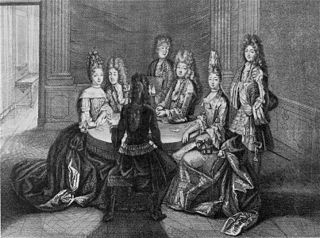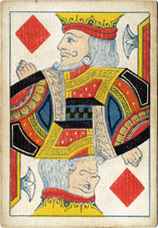 W
W600 is a Venetian card game very similar to the game Blackjack. The goal of the game is to get the hand value of 600. Hands at values above 600 are busts and are disqualified.
 W
WAmbigu is an historical French card game, composed of the characteristic elements of whist, bouillotte and piquet. A whist pack with the court cards removed is used, and from two to six persons may play. Each player is given an equal number of counters, and a limit of betting is agreed upon.
 W
WBaccarat or baccara is a card game played at casinos. It is a comparing card game played between two hands, the "player" and the "banker". Each baccarat coup has three possible outcomes: "player", "banker", and "tie". There are three popular variants of the game: punto banco, baccarat chemin de fer, and baccarat banque. In punto banco, each player's moves are forced by the cards the player is dealt. In baccarat chemin de fer and baccarat banque, by contrast, both players can make choices. The winning odds are in favour of the bank, with a house edge no lower than around 1 percent.
 W
WBrelan (Old French: brelenc is a famous French vying game with rapidly escalating bets from the seventeenth to nineteenth century, and hence also a name for a card player, gambler or the name of the place where the game was played. The game is quite similar to the game of Bouillotte, but it is not played anymore.
 W
WCrash is a British card game extension of Nine-card Brag. In Crash, there is no betting, as in Brag, but rather players aim to reach a total of 15 points, gained over successive deals.
 W
WGoofspiel is a card game for two or more players. It was invented by Merrill Flood while at Princeton University in the 1930s, and Alex Randolph describes a similar game as having been popular with the 5th Indian Army during the Second World War.
 W
WGrobhäusern is an historical German vying game in which players bet and then compare their 4-card combinations. It is played by two to eight players using a 32-card piquet pack. The game was illegal in most places.
 W
WLansquenet is a card game, named after the French spelling of the German word Landsknecht, which refers to 15th- and 16th-century German mercenary foot soldiers; The lansquenet drum is a type of field drum used by these soldiers. It is recorded as early as 1534 by Francois Rabelais in Gargantua.
 W
WMonte Bank, Mountebank, Spanish Monte and Mexican Monte, sometimes just Monte, is a Spanish gambling card game and was known in the 19th century as the national card game of Mexico. It ultimately derives from basset, where the banker (dealer) pays on matching cards. The term "monte" has also been used for a variety of other gambling games, especially varieties of three-card poker, and for the swindle three-card monte.
 W
WPost and pair is a gambling card game that was popular in England in the 16th and 17th centuries — another name of the game was Pink. It is based on the same three-card combinations, namely prial, found in related games of this family.
 W
WPrimo visto, Primavista, Prima-vista, Primi-vist, Primiuiste, Primofistula, or even Primefisto, is a 16th-century gambling card game fashionable c. 1530–1640. Very little is known about this game, but judging by the etymology of the words used to describe the many local variants of the game, it appears to be one of Italian origin.
 W
WQuinze, Quince, also known as Ace-low, is a 17th-century French card game of Spanish origin that was much patronized in some parts of Europe. It is considered a forerunner of the French Vingt-et-un, a game very popular at the court of Louis XV, and also a two-player simplification of the modern game of Blackjack.
 W
WRanter-Go-Round is a primitive gambling game and children's game using playing cards. It is known in most European countries as Cuckoo; the French variant being called Coucou. Other English-language names include Chase the Ace, Cuckoo and, in America, as Screw Your Neighbor.
 W
WRummoli is a family card game for 2 to 8 people. This Canadian board game, first marketed in 1940 by the Copp Clark Publishing Company of Toronto requires a Rummoli board, a deck of playing cards, and chips or coins to play. The game is usually played for fun, or for small stakes. Rummoli is one of the more popular versions of the Stops Group of matching card games, in particular it falls into a subgroup of stops games based on the German Poch and falls into a family of Poch variants such as the French Nain Jaune(Yellow Dwarf), the Victorian Pope Joan but most like the American game Tripoley which debuted eight years earlier in Chicago in 1932.
 W
WTong-its or Tongits is a 3 player rummy type of game that gained popularity in the 1990s in Luzon, the largest island of the Philippines.
 W
WTrente et Quarante, also called Rouge et Noir, is a 17th-century gambling card game of French origin played with cards and a special table. It is rarely found in US casinos, but still very popular in Continental European casinos, especially in France, Italy, and Monaco. It is a simple game that usually gives the players a very good expected return of more than 98%.